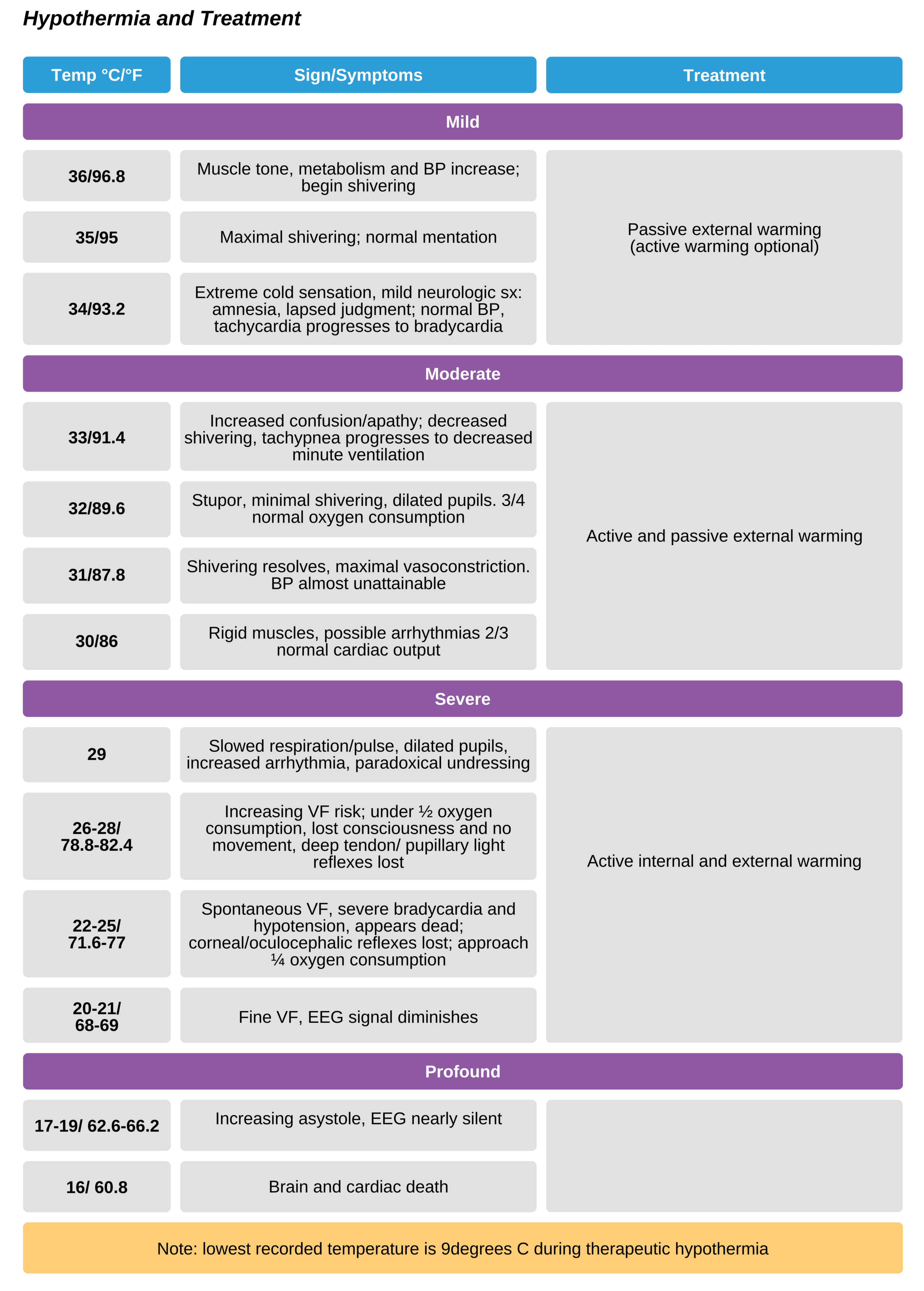Chapter Progress
0% Complete
Get ACLS Experienced Provider Certified Today
Defining Hypothermia
Hypothermia severity depends on the core body temperature:
- Mild (34- 36 degrees C): patents will begin shivering to help with temperature regulation. Typically, there are no neurological signs.
- Moderate (30-34 degrees C): there is the onset of neurologic signs, including confusion, stupor, and lost consciousness. Additionally, shivering decreases until it resolves.
- Severe: (under 30 degrees C): patients are unconscious with little sign of life. Vital signs become imperceptible, including lost consciousness, reflexes (initially pupillary then deep tendon), respirations, and finally organized cardiac rhythms.
- Profound: (below 20 degrees C): complete loss of signs of life. There would be asystole on cardiac monitoring. As well, EEG is silent with no activity in the brain, and the person appears clinically dead. On rare occasions, a person may be resuscitate following this state, but neurologic recovery is rarer still.
- Profound hypothermia is not managed differently from severe hypothermia
